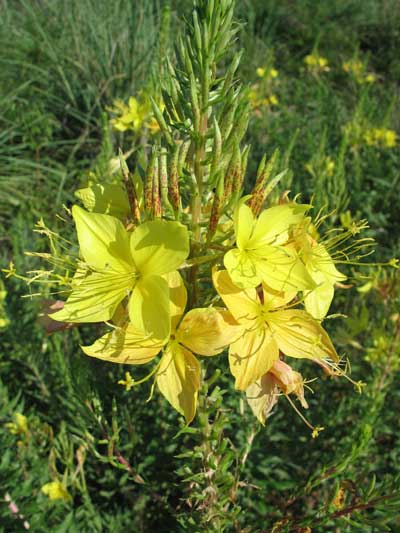|
back Home Life Along a
|
|
Fourpoint Evening Primrose
Oenothera rhombipetala|
© Priscilla Crawford, Oklahoma Biological Survey |
As a biennial, this plant produces a rosette of leaves during its first growing season then produces flowers during the following year. In the second year the plant will grow to 0.3 - 1 m tall with a large spikes of flowers. The yellow flowers are 5-8 cm wide with diamond shaped petals. In fact, diamond petal primose in another common name for this showy flower. The flowers open around sunset and wither the following morning. Being open at night allows moths to drink nectar from the long floral tube and as a result pollinate the flower. These flowers will bloom from June to October. You can see fourpoint evening primrose on sand dunes, sandy prairies, river valleys, and roadsides. This plant is common and lives across Oklahoma except in the far eastern region where deciduous forest dominates. In the appropriate habitat, this species can be found throughout central North America. Herbivorous mammals, such as white-tailed deer, will eat fourpoint evening primrose, as well as herbivorous insects, like grasshoppers and caterpillars. Humans have used the oil from this family of plants to make lotions and creams because it has emollient properties may hydrate and soften the skin. |
|
back to species list |
PDF of all species profiles
|

